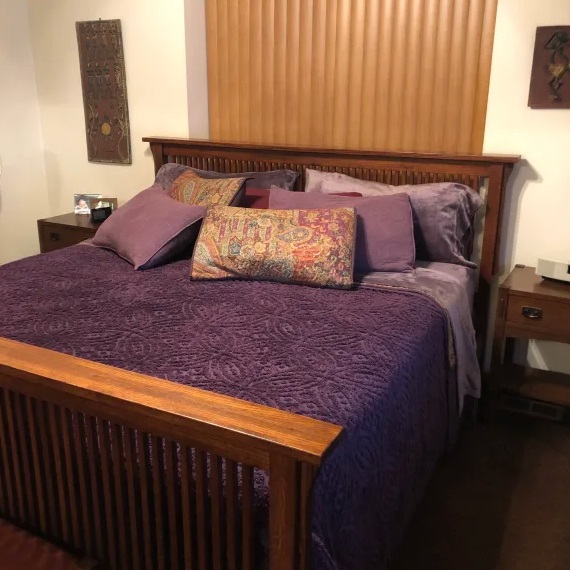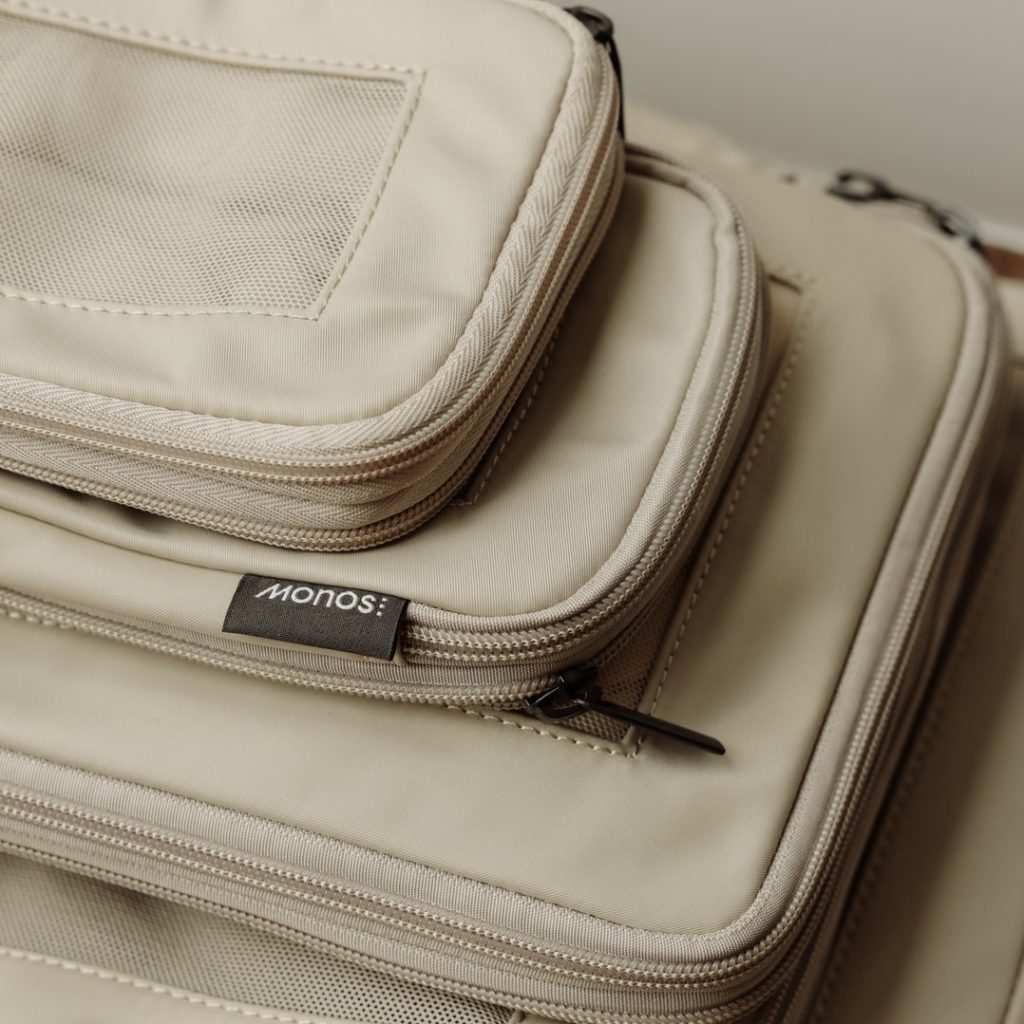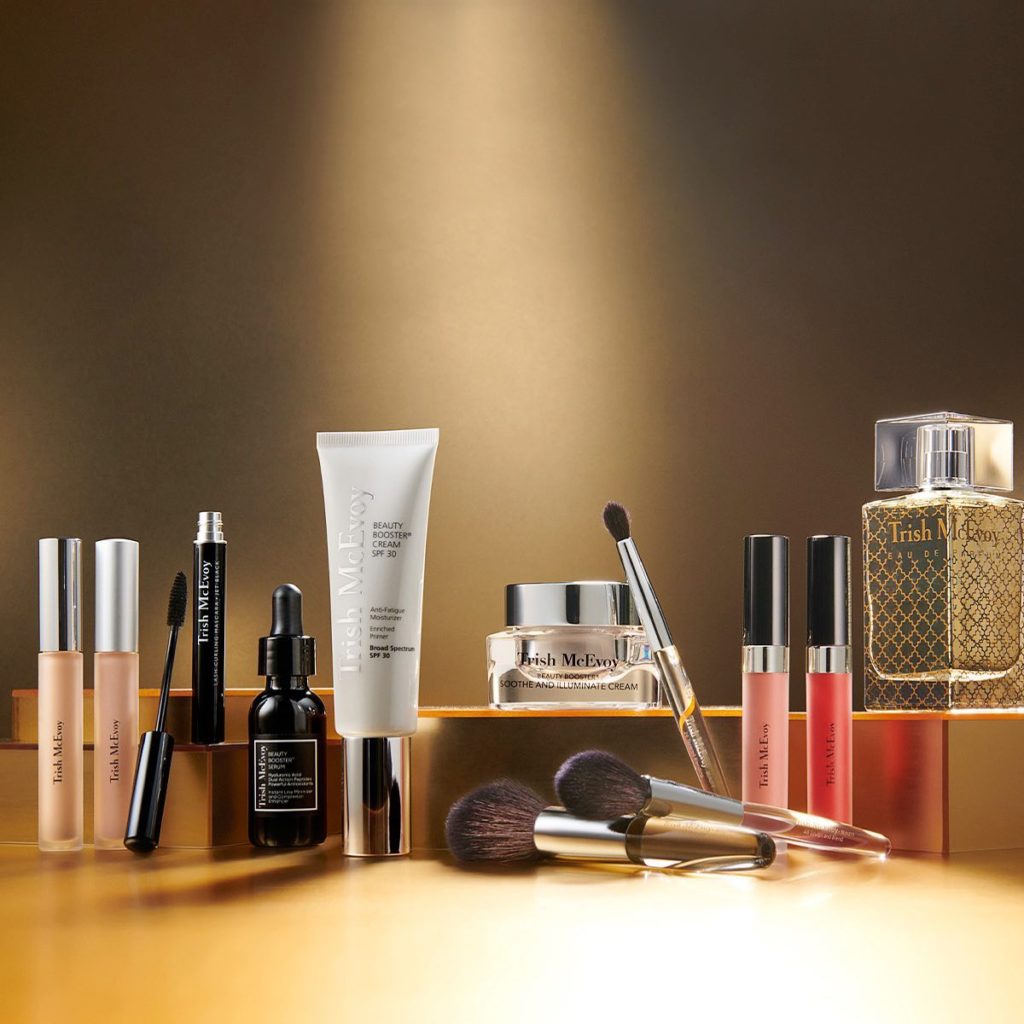6 Best Rearview Mirror Camera Brands
How To Choose The Best Rearview Mirror Camera Brand
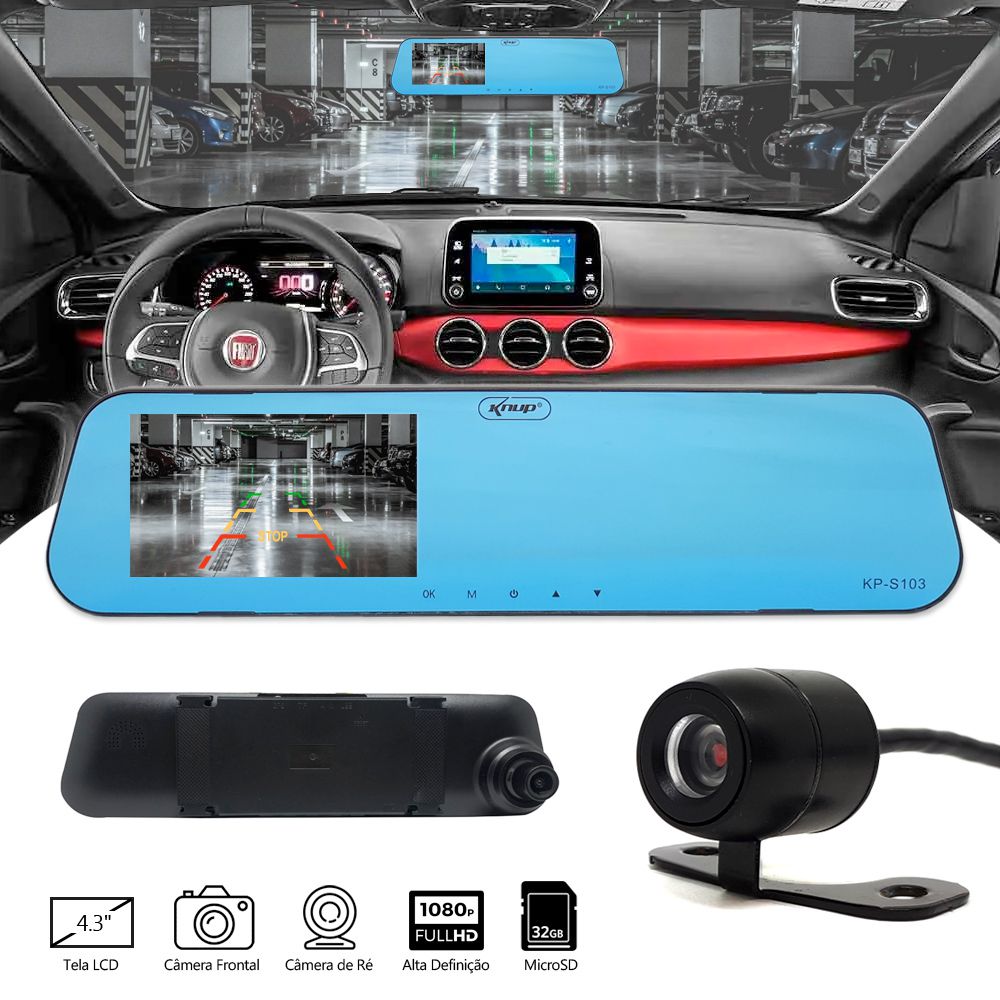
Backing up into objects is all too common. Whether it’s a bicycle, hedge, or another car, drivers have become all too familiar with the impending crunch and clunk that comes with putting their vehicles in reverse.
Regular rearview mirrors are great for driving, but their viewpoint is incredibly limited to a fraction of what’s behind you. That’s where backup cameras come into play. Attached to the lower half of your vehicle, and in some cases, the hood and side mirrors, they provide up to a 180-degree span of what’s behind you.
Rearview mirror cameras usually come with some pretty handy features that ultimately make driving safer, like backup lines and night vision.
Newer car models come with backup cameras installed, but the average age of cars on the road is 12 years, meaning a whole lotta drivers are backing up blindly if they haven’t already gone ahead and installed a camera.
Ahead, this best rearview mirror camera brands list will cover the A-Zs of backup cameras, including what to keep in mind when shopping for one, some of the top brands out there, as well as the differences between wireless and wired cameras.
By the end of this article, we hope you’ll understand a bit better what’s involved in the setup and walk away with a solid backup camera you’re confident in.
Best Rearview Mirror Camera Brands: Things To Consider
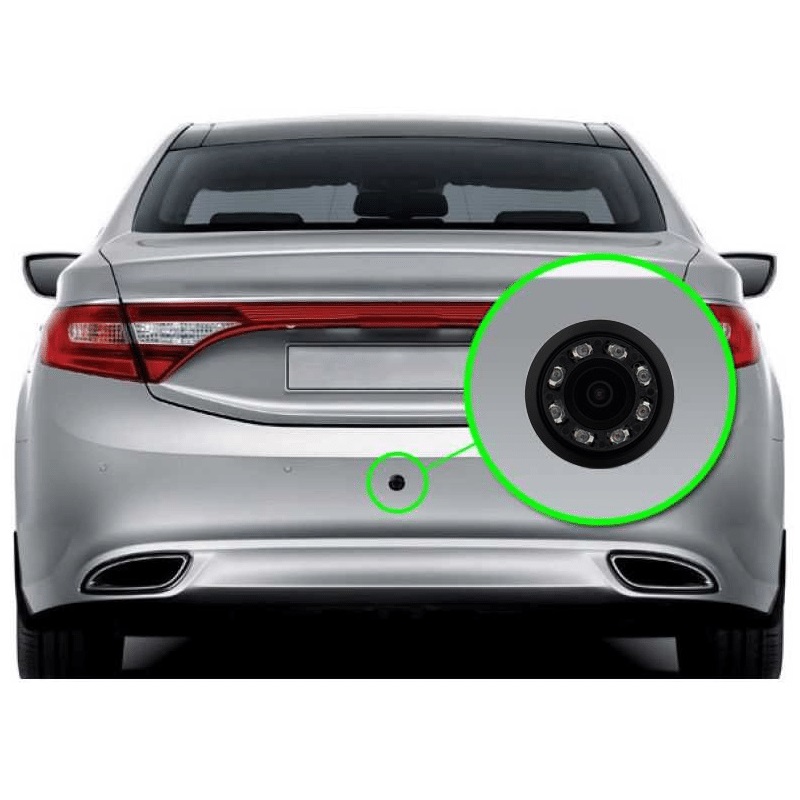
Know what you want? Good on you. If you don’t, we’ve put together a list of things to look out for when looking at the best rearview mirror camera brands. You’ll find these same details scattered through each brand’s section a little later on, so we’ll fill you in now so that you’ll be well prepared.
Ease of Use and Installation
Setting up a Rearview Mirror Camera isn’t overly complicated if you know your way around a car. Some choose a professional to get the job done, while others tackle the task head-on…and end up mangling their cars.
Jokes aside, if you’d like to install your own camera and display unit, it’s a good idea to choose one that’s user-friendly. You’ll notice that some of the models on this best rearview mirror camera brands list require a little more effort than others, but if you’re looking for simplicity, you may find that the easiest road is with a wireless camera.
When deciding which brand to buy from, look into how that particular model is installed. You can find that in the downloadable user manual that is usually found on the product page.
Certain models on this best rearview mirror camera brands list are compatible with more than one camera, so keep in mind that those will take a little longer to set up.
Quality of Materials
Just like cars, what your rearview camera and display are made of matters. Of course, just seeing what’s behind you is what’s really important, so whether you get a small, simple unit or something a little more impressive, just be sure you can actually see clearly. A few extra bucks may save you from a nasty accident.
When it comes to materials, what rearview cameras and display units are made from is pretty similar, usually plastic since it’s hardy and doesn’t corrode, but you’ll also find aluminum frames for certain styles. Always be sure your camera is weatherproofed—the last thing you want is one that fogs up easily.
You’ll come across a few models on this best rearview mirror camera brands list that are marine-grade, meaning they can resist the elements without fogging up.
Display Size
If you don’t want to strain your eyes while backing up, consider a monitor that’s bigger than a Post It. Believe us, display units are out there of all shapes and sizes, but the goal is to see what’s behind you, not squint at what’s behind you.
With that said, not everyone needs a giant TV screen in their car, and let’s be honest, a lot of cars couldn’t handle one. Plus, you don’t want a screen that’s going to get in your line of vision while driving forward.
Larger screens are better suited for bigger vehicles like SUVs and trucks, so just be sure to choose according to your vehicle size. Choose a screen that you can see clearly.
You may notice that some of the models on this best rearview mirror camera brands list offer square monitors, while others are fitted just like how your rearview mirror would be. When it comes to size, choose the one that best suits your vision and whether you’d like to glance up or down to look at it.
At the end of the day, you want a clear image, so be sure to pay attention to the screen resolution and monitor type too.
We’ve included the screen sizes, viewing angles (110-degrees to 180-degrees), and type of display (HD, LED) in each section of this best rearview mirror camera brands list so you’ll be able to make your choice without any extra research.
Tech Components
You may be getting a rear view mirror camera because you’re sick of straining your neck, running into your hedge, or scratching up your car. If you’re not into bells and whistles, search for a rearview camera that covers the basics.
Normally, you’ll get scale lines and night vision, but with lower-priced models, those things aren’t always a given. Read the details.
Of course, if you gobble up tech like turkey on a cool Thanksgiving night, then there are a few other components you may love to look out for like solar-powered screens, video recording, and quad-camera viewing modes.
Wired/Wireless Setup
Both kinds of setup have their advantages. With wireless, you’re getting a pretty quick hook-up process, but you just need to know your way around some simple tech. It’s not too hard to figure out, but some prefer things the old-fashioned way, and so a wired system may be more appealing.
With a wired camera, you’ll need to feed the cord that attaches to your camera all the way through your car to the dash so that it works with your taillights. This method requires a little bit of work, but nothing your manual and a decent drill shouldn’t be able to help you with.
The difference in the time it takes to install a wireless versus a wired camera is about 66% less. If you’d rather skip the drilling, stripping, and fusing, consider a wireless model.
Price
We all have different budgets, needs, and preferences, and though we know we probably don’t have to tell you this, keep those in mind as you shop. You’ll find cameras and display units that total under $50 or kits that cost upwards of over $1,200.
It’s all about preferences, but this isn’t something you want to skimp on. Lower-end models are totally fine as long as they get the job done. If you’re going with a lower-cost option, pay attention to the resolution and grab a ruler. If 4” looks too small, go bigger.
Of course, with the larger size often comes an increased price, but comb through the companies on their best rearview mirror camera brands list to see if you can find a larger size for less.
Choose a rearview mirror camera that’s going to help your driving, not hinder it.
Warranty
Normally, tech devices come with a warranty. And with even the less costly models on this best rearview mirror camera brands list, you’ll find at least a 12-month warranty.
A warranty is a guarantee from the manufacturer that they’ll replace your product if there’s a defect or error on their part. The names on this best rearview mirror camera brands list have varying warranties, some 12 months and others 2 years—but you’ll also find one high-end company here that doesn’t offer any coverage.
If that’s important to you, keep an eye out on the product page or search through the company’s Terms & Conditions. For the ones mentioned in this list, we’ll include all warranty lengths to save you time.
6 Best Rearview Mirror Camera Brands
What is the key to getting what you want? Shopping around. Lucky for you, we’ve compiled some of the best rearview mirror camera brands around into this list to make the process easier.
Gone are the days when you had to spend your entire Saturday driving around from auto shops to tech stores to find a gadget that meets your budget and needs. Here, we’ll provide all you need to know about the top selling rearview camera brands and their product lineups, so all you need to do is kick back, grab a beer, and browse.
1. Pyle

Founded in the 1960s, Pyle is an all-American brand that manufactures in the USA. Known for its specialty car speakers and woofers, it offers a spectrum of musical instruments, audio tools, and gadgets for home too, along with auto gear.
Based in Brooklyn, Pyle has a few different backup cameras to choose from in both wired and wireless options. You’ll find them in different formats too, like the ones that take the place of your rearview mirror or those you can mount a little lower down.
Varying greatly in price, from $50 to as high as $500, you’ll choose from smaller, simple cameras and display units, as well as those with up to four camera views.
With the more expensive Pyle rearview cameras, you’ll get a 7” screen with a 420 resolution, and a 170-degree viewing angle. Less expensive models have 4.3” screens, a 420 resolution, and a 135-degree view.
No matter which one you’re looking at, your camera will be universal for easy installation on all types of vehicles, be fog resistant, and come with a 1-year warranty. Even the less expensive models have IP-67 marine-grade waterproofing, and you can depend on them for accurate distance scale lines and true colors.
2. Auto-Vox
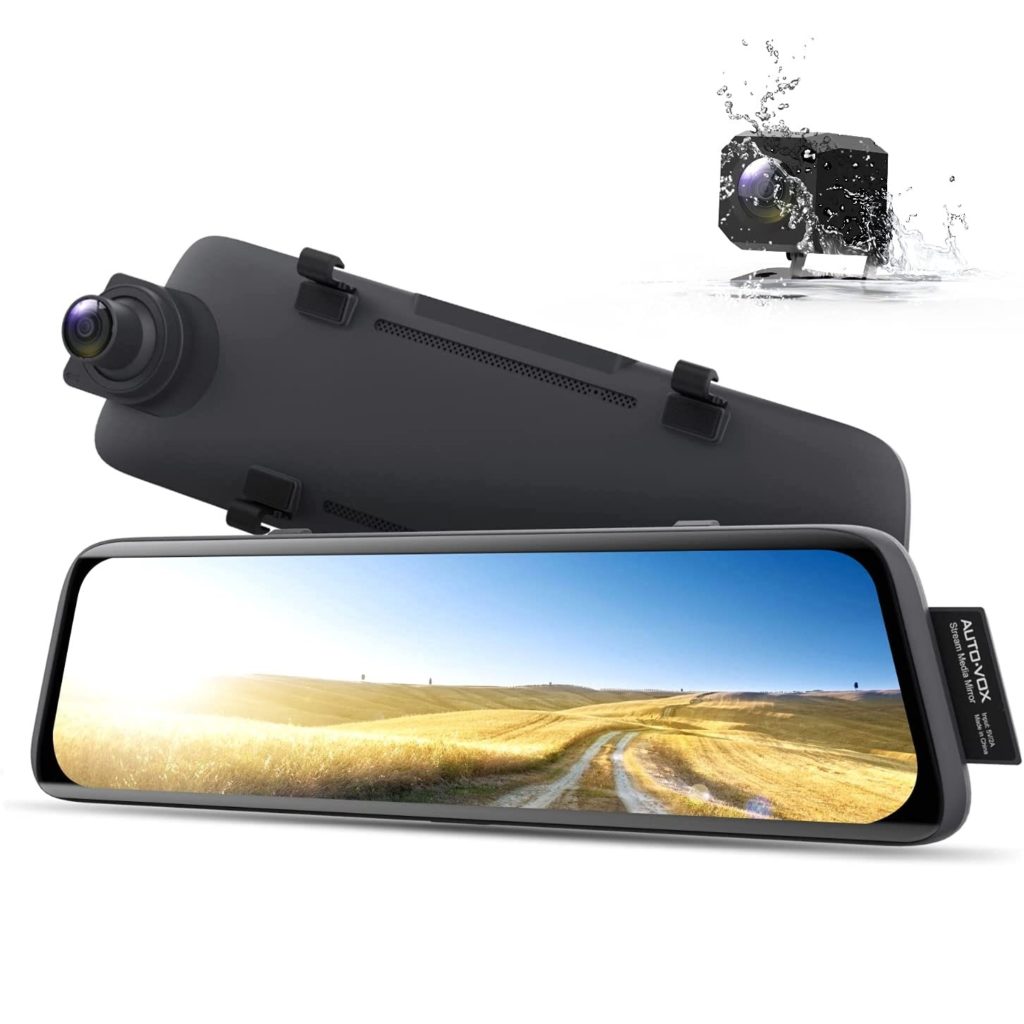
With over a million road fatalities each year, Auto-Vox hopes “to minimize the shadow of driving on people, so that the process becomes smart and easy, and more importantly, safe.”
Offering high-tech auto accessories like rearview mirror dash cam, safety assistance, and solar-powered backup cameras, Auto-Vox is one of the techy-er options on our best rearview mirror camera brands list.
The brand was founded in 2007 in Shenzhen, China, and makes seven different wireless and four wired camera types. Most models have dual camera views, giving you more options and coverage around your vehicle.
All offer 720P HD monitors with clean night vision to help you drive safely at night. Auto-Vox wireless backup cams promise interference-free transmission, meaning you won’t fuzz out in times you need your camera most, like low-visibility snowstorms and heavy rain.
Its wireless units give you a 110-degree view of what’s behind you, their displays varying from simple dash hookups to those that take the place of your rearview mirror.
All Auto-Vox backup cameras come with a 12-month warranty with the option to extend it another 6 months. You’ll find simple, wireless models on the site for $60 and more complex or larger options, such as those suited for RVs, for up to $230.
3. Esky

Esky gets straight to the point with its mission and products. Founded in 2010, the brand’s goal is “to make people’s lives safer, more convenient, and better.” Offering a small range of simple, smart electronics, backup cameras are nestled in among a short list of products including key finders and barcode scanners.
Esky sells its backup cameras and monitors separately, offering a total of three cameras and one display unit. Its three cameras are very different, one a pretty silver, the other, a high-tech black, and the final, one that’s built into a license plate frame. Pretty smart.
Its most expensive model, the frame, offers a 170-degree view, is waterproof, and has LED lights for night vision mode. Chrome-plated aluminum-zinc, this sturdy camera has a 420 resolution and is super easy to install with just three items in its box.
The least expensive camera offers the same level of quality, with a 170-degree view, 420 resolution, and hi-def color. It’s stainless, weather-resistant, and fog-proof.
Since no camera would be complete without a monitor to view its picture on, the brand’s one monitor is anti-glare, has a 4.3” TFT LCD screen, and gives a 180-degree view.
Esky cameras and the screen come with a 12-month warranty and a 30-day money-back guarantee. You can get one of its cameras for $20-$26 and the screen for an additional $22.
4. Type S Auto
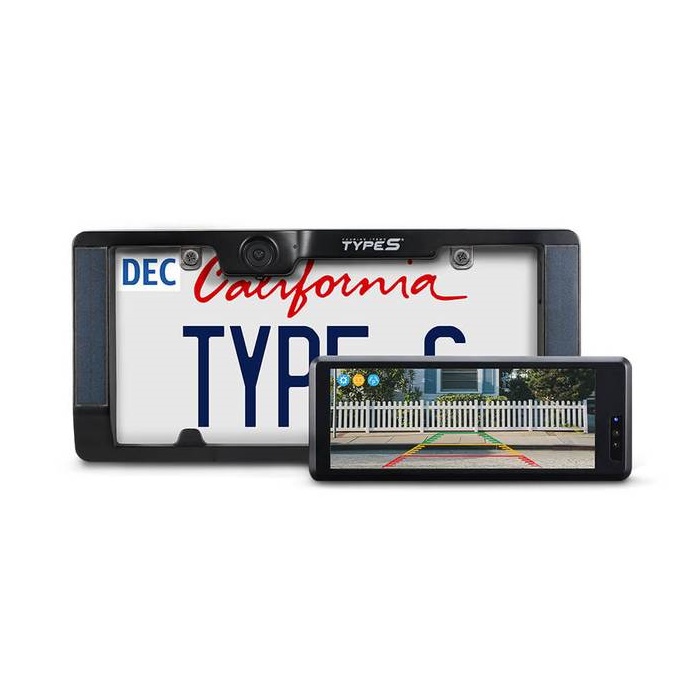
Type S specializes in auto accessories like seat cushions, dash cams, jump starters, and something called a Blizzard Box—a trademarked electric portable cooler. Started up in the late 90s, the brand aims to protect, help, and guide all road travelers regardless of where they’re going.
Known for its dependability, Type S offers innovative accessories like its solar-powered wireless backup cameras. It has five different cameras available, four of those five that are built-in to a license plate frame meaning setup is going to be a breeze.
Since they’re solar-powered, you also don’t need to worry about changing a battery, and all cameras come bundled with monitors that are more rectangular and slim than the average model. So, if you need to hook up another camera in front, your view will be evenly split.
If you want to add another camera for the front of your car, you can buy it separately and hook it up the same way you did the first.
The 720P HD display monitor attaches easily to your front dash and has all the must-have features like a virtual parking assistant. The camera itself is weatherproof and fog proof, offering a view up to 160-degrees. You’ll have the choice of wireless or hardwired and a few different sizes of monitors, all come with a 12-month warranty.
You’ll find Type S cameras and monitors bundled for $100-$200.
5. DoHonest
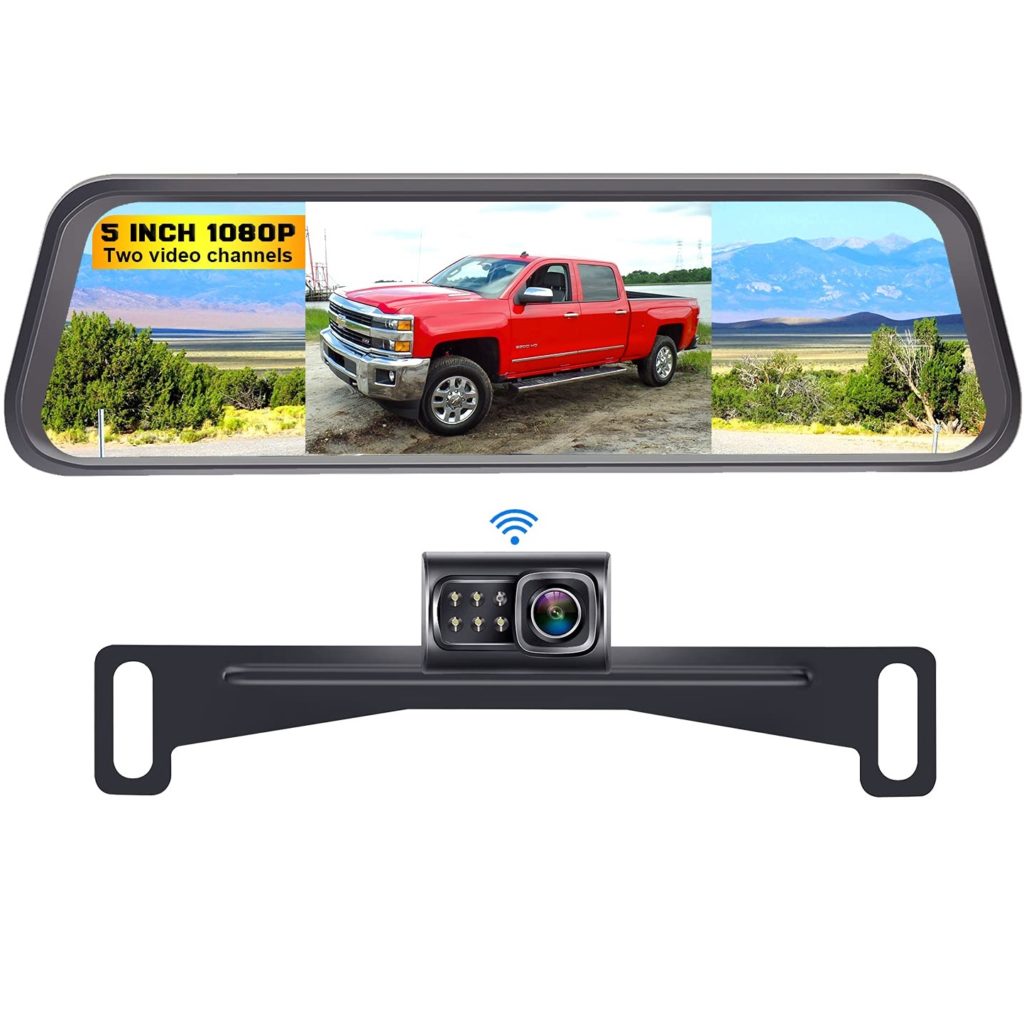
DoHonest doesn’t have an official brand page, but from customers, we’ve come to understand that the brand is highly praised for its quality backup cameras.
Offering several different models of wireless cameras and monitors, DoHonest works for pretty much all vehicle types, from tiny cars to large vans. You’ll get a reliable HD 1080P image and clear, vibrant night vision.
DoHonest cameras are IP69 marine-grade waterproof and fog proof and give you a 150-degree view. With 24 hopping points, the signal transmission from camera to monitor is guaranteed to come through in bad weather.
The monitor offers parking assistance and can handle up to two different camera views in case you want one for the front of your vehicle as well. The installation of your camera and monitor is really easy—a suction cup display unit and two screws in the back will do it.
DoHonest rearview mirror cameras come with a 2-year warranty and 60-day money-back guarantee. You’ll find them on Amazon for $80-$130.
6. Gentex
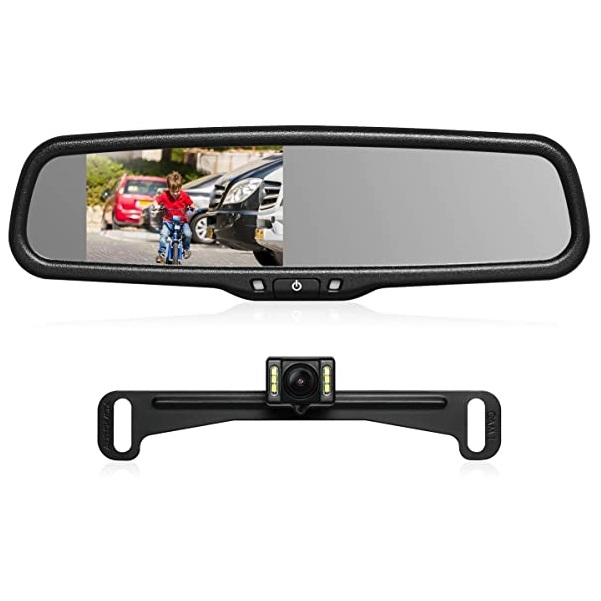
Perhaps the most high-tech name on this best rearview mirror camera brands list, Gentex is known for its superior anti-glare and fog-proof mirrors and glass. Seeing the opportunity for a sleek, user-friendly backup camera, the brand integrated recording and transmitting tech into its signature mirrors.
It offers just one Full Display Mirror, but with as many functions and features as this one has, one is all it really needs.
The rearview camera provides a panoramic view behind you, swapping swiftly between your regular mirror image and the one transmitted by the camera if for some reason your camera view becomes obstructed. It also has an auto-dimming function to help you see clearly when the sun is low.
As for the cameras, two are stashed out of sight in your exterior mirrors, while the other is mounted on the roof, providing 180-degrees of clear vision all around you. You’ll have the option to switch between viewing modes or combine all three.
Add features like Bluetooth, Wifi, and even audio recording to your mirror, and toggle through them with its touchscreen.
What you see with your digital rear view mirror, you’ll be able to record too, just in case any accidents do happen. Since this rearview mirror camera has a few more components than others, the installation process will take a bit longer than normal. If you’d rather leave things to professionals, head to your nearest auto shop.
In the end, you’ll have no suction cups, no hanging wires, and no blocking screens, just full, clear vision—what a safe car should be.
Gentex mirrors don’t look to be available for purchase through the brand’s website, but we found several retailers like Crutchfield and Voxx. Another thing we found was that none of the brand’s products come with a warranty as stated in their Terms & Conditions.
The Full Display Mirror is $900-$1,295 depending on where you buy it from. Just be sure you’re buying the camera mirror and not one of their regular rearview mirrors.
Wired vs Wireless: Which Rearview Mirror Setup is Better?
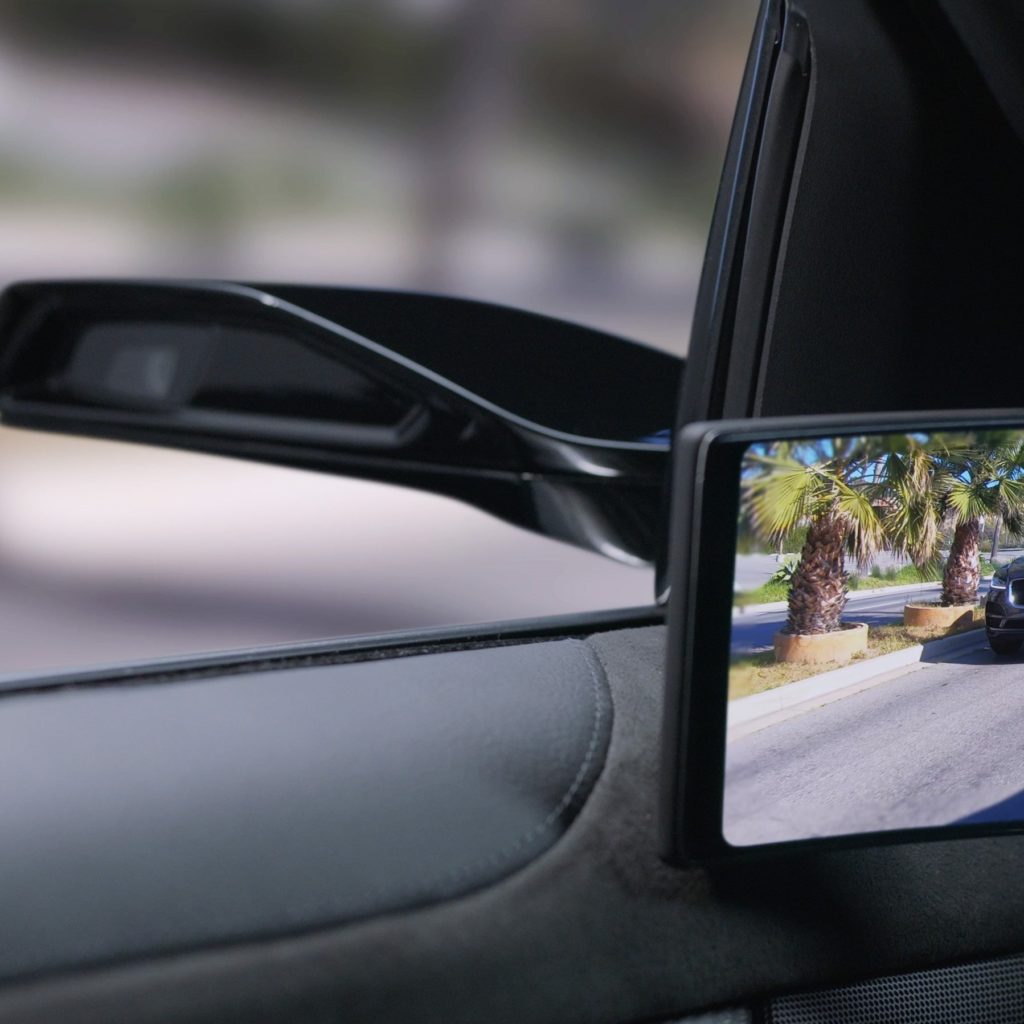
There are some big differences between wired and wireless cameras, the most obvious is that one comes with a cord. Below, we’ll walk you through the pros and cons of each option to help you better understand your choices.
Wired rearview mirror camera systems are the original models made. Usually, anything with a wire is a little more dependable when it comes to picture quality, but that wire can be cumbersome and the installation process a bit difficult. They also tend to be more expensive.
If you’re thinking wired mirrors aren’t sounding too good now, you may be surprised that they’re the more reliable option and proud car owners tend to go with them over wireless—especially ones that don’t mind doing a little car work on a Saturday.
Because of the hardwire, you won’t need to worry about interference between the camera and the dash display. You’ll get a reliable, consistent feed without interruptions.
The main con is a somewhat tricky installation. If you’d like to see how the setup for a wired backup camera mirror works, read the very last section of this best rearview mirror camera brands list.
As for wireless cameras, they, of course, don’t need a wire to work. The installation process is simple, but you will need some basic knowledge of how to install the camera and sync it with the display.
Wireless backup cams are great for those who have longer vehicles or those who don’t want to mess around with cords. They’re usually the less expensive option too, but they’re prone to signal drops or fuzzy pictures—especially in inclement weather.
Some of the wireless models on this best rearview mirror camera brands list boast strong signals and uninterrupted transmission, so if you want the best of both worlds, look out for those types.
Can I Install a Backup Camera Myself?
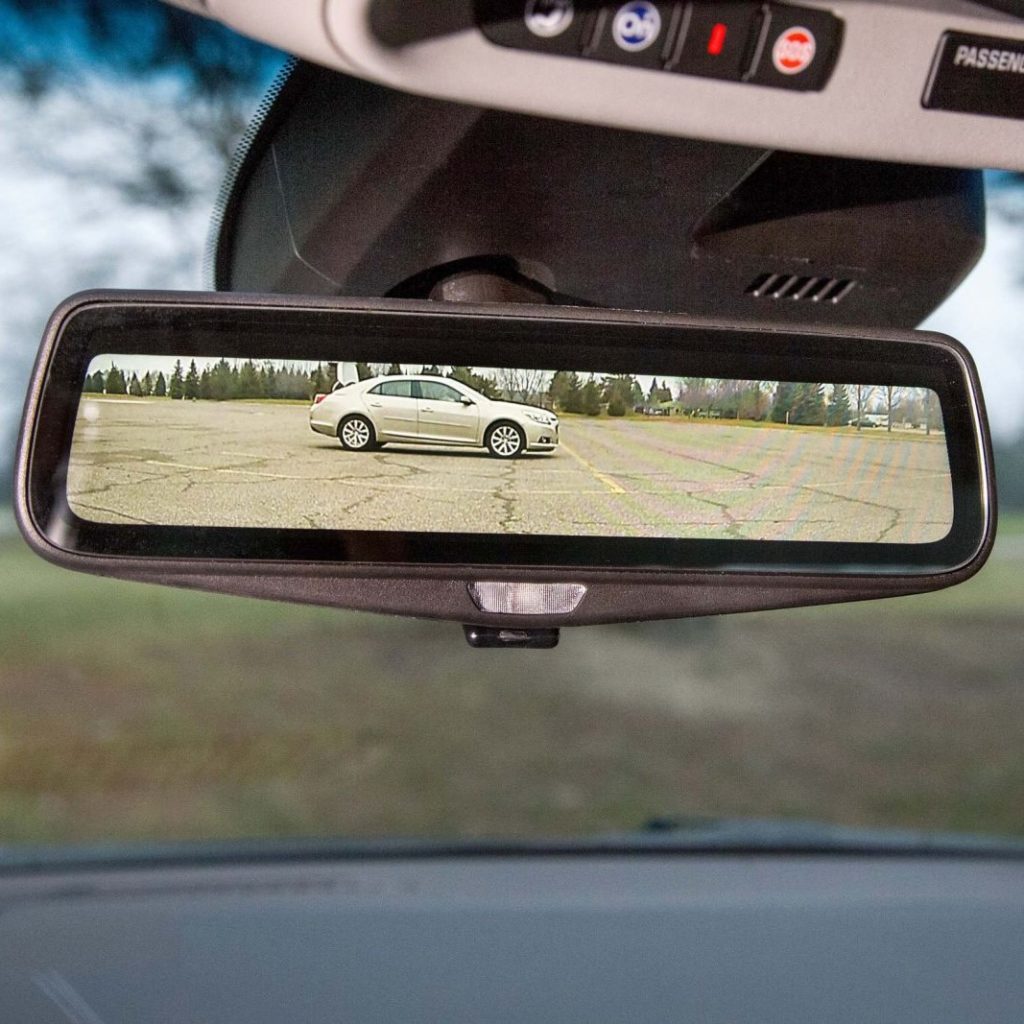
Whether you pick a wireless or wired backup camera, if you’ve got some basic handyman skills and you know how to follow directions, installing your unit yourself is possible.
You’ll get an installation manual with your camera, but if it mysteriously grows legs, you can redownload those manuals online from the brand you purchased it from. If there isn’t one available, a simple Google search will yield quite a few step-by-step guides.
Setting up a wireless unit is going to be a lot easier. It takes just a few simple steps and usually under 30 minutes of your time—maybe less if you know your way around a car.
Wired backup cams are a bit trickier, and though they involve a ton of different steps, you can get the whole thing configured in about an hour if you’re good with tools and wires. If not, and having a wired model is non-negotiable, you can always take it into a car shop for installation.
For the installation of wired cameras, you’ll need to take off your back license plate and the interior panel of your trunk. Some drilling is required to connect your camera’s AV wires through your car and up to the dash, so be prepared to handle a drill.
You’ll then run the cable through your car and up to the front and do some more tinkering, stripping, and fusing with your car’s reverse light wires. This is so that your camera syncs up with your lights and sounds, alerting you if an object is nearby.
With wireless, the process is a little more straightforward, and it involves mounting your camera to the back of your car, the display unit at the front, connecting AV wires, and switching everything on.
Regardless of which option you decide on, be prepared to have a few tools handy like a screwdriver, drill, and electrical tape.
Looking for other top brands? Check out these curated lists below:
Best Liquor Subscription Brands


